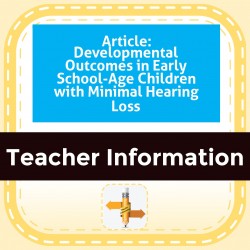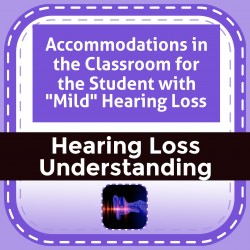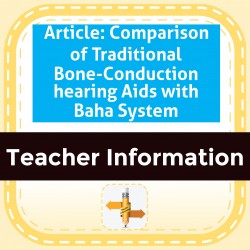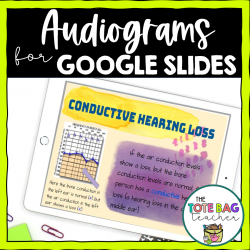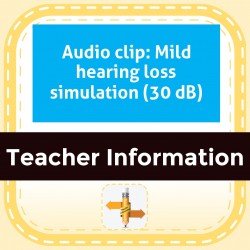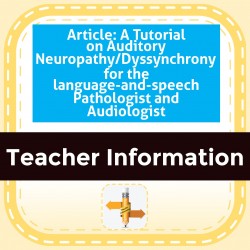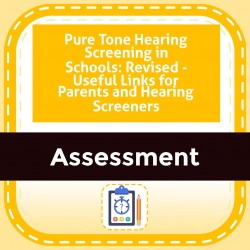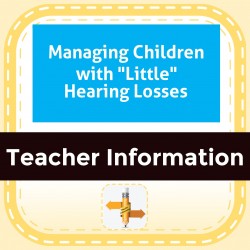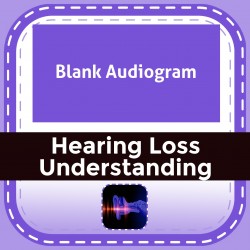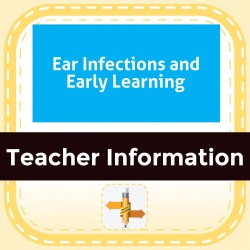Ability Levels
Categories
Resource Types
Age/Grade Range
CCSS
Anchor Standard
Speaking & Listening
Language
Reading
Article: Developmental Outcomes in Early School-Age Children with Minimal Hearing Loss
$ 0
This study examined PS-ychoeducational outcomes of age-matched grouPS- of children with minimal hearing loss. Supports early identification of hearing loss and the need for academic and social support
...
.
Accommodations in the Classroom for the Student with "Mild" Hearing Loss
$ 0
This one-page handout for DHH professionals describes information to be shared with classroom teachers who have students with mild hearing loss (26-40 dB).
Article: Comparison of Traditional Bone-Conduction hearing Aids with Baha System
$ 0
This study compared functional gain for infants and children with bilateral conductive hearing loss who were initially fit with traditional bone-conduction devices then probressed to BAHA with Softban
...
d and finally to unilateral BAHA implants.
Audiograms for Google Slides
$ 425
Students with hearing loss need to learn to be their own best self-advocate. A huge first step towards this essential skill is learning about their own hearing loss and how to read their audiogram.Wit
...
h this product, your d/hh students will learn the basic terms of hearing loss, the evaluation process, and how to read an audiogram. This Google Slides resource includes over 32 editable and customizable slides with topics including:Air conductionBone conductionMaskingTypes, degrees, and configurations of hearing lossThis lesson also includesSample audiogramsA slide for the student to insert their own audiogram and interpretationSix self-check slidesGlossary of key termsPerfect for face-to-face or distance learning, in a large group or one-on-one setting, this PREP-FREE product will make teaching the ins and outs of audiograms so much easier for you and your students.Please note that upon purchase you download a pdf with a link to the Google Slides lesson. Thank you!
Audio clip: Mild hearing loss simulation (30 dB)
$ 150
Simulation from original 1960s record: 30 dB mild hearing loss.
Article: A Tutorial on Auditory Neuropathy/Dyssynchrony for the Speech Language Pathologist and Audiologist
$ 0
This article presents inforamtion about developmental outcomes of children with auditory neuropahty, auditory dyssynchorny. It also provides information about etiologies and audiological information o
...
f children with AN. It includes assessment tools that have been useful in decision making for children with AN.
Pure Tone Hearing Screening in Schools: Revised - Useful Links for Parents and Hearing Screeners
$ 0
Links provided for parents about hearing screening and hearing loss. Links provided for hearing screeners about hearing screening procedures. Links to videos describing pure tone hearing screening in
...
the schools and common mistakes.
Managing Children with "Little" Hearing Losses
$ 0
Collected research information on prevalence and treatment with amplification. Includes a age chart for audiological and family-centered intervention. Also a chart on sequence of development for infan
...
ts and toddlers for auditory, language and speECH-. Extensive references. 2001
Ear Infections and Early Learning
$ 0
Informational handout about the impact of fluctuating hearing loss caused by recurrent ear infections. Includes prevalence of ear infections in children, relationship to learning issues and what famil
...
ies and interventionists can do.
 Your browser is out of date. For best experience switch to latest updated Browser.
Your browser is out of date. For best experience switch to latest updated Browser.
 Get Chrome
Get Chrome Get Edge
Get Edge Get Firefox
Get Firefox